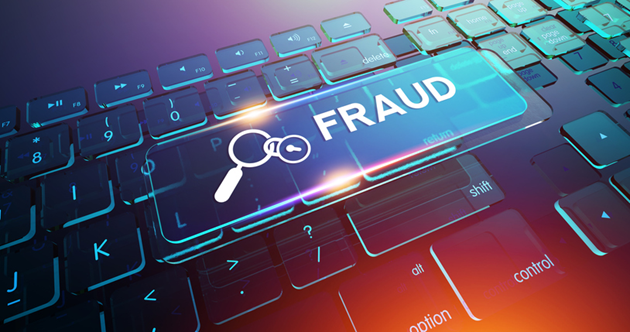High-risk and illegal online transactions can be identified with the help of fraud detection tools. To identify potential unauthorized purchases, transactions, or access, the software continuously evaluates user behavior and calculates risk levels. These tools are used by digital banking and e-commerce companies’ IT and compliance departments to keep an eye on users’ potential illegal activities. Therefore, make use of fraud detection tools to make sure that your business and your customers’ sensitive data are safe and that transactions are legitimate.
What is software for detecting fraud?
The purpose of fraud detection software is to keep an eye on, investigate, and prevent online fraud. It is frequently utilized to stop fraudulent transactions involving stolen IDs or cards.
Additionally, businesses can verify users at signups, logins, and other touchpoints by utilizing fraud detection software and tools.
Key Features of Fraud Detection Software:
Misrepresentation recognition programming ought to cover many bases, from chargeback avoidance to personality confirmation. Some examples of essential features include:
- Rule of Risk: The fundamentals of detecting fraud. You can filter user actions based on the data you find using risk rules. The fundamental gamble rules are: If the IP address is associated with a VPN, block attempts to log in.
- Risk Scoring: Some rules might never change. Allow or deny user actions with simple options. You can play around with scores and thresholds in the most advanced systems to determine how dangerous your actions are. Example: If the customer is not located in the same country as the payment card, the risk score will be increased by 5 points.
- Continuous monitoring: Think about what you need. If you have any desire to forestall chargebacks or follow hostile to illegal tax avoidance guidelines, identification programming should have the option to screen installments on your site. You must also be able to immediately block suspicious actions to protect your account and verify your identity.
- Engines for Machine Learning: You might be looking at a lot of data. Machine learning (ML) algorithms that use historical trading data to suggest risk rules are included in the best anti-fraud software. Bonus points if the system has a white box where you can understand the risk rules.
How do you pick the best software for detecting fraud?
To assist you in selecting the appropriate tool for your organization, we need to review the features and capabilities of fraud detection software first.
- Level of automation
- Inclusion
- Many layers of security, include device identity, authentication, session behavior analysis, account monitoring, and other features.
- Price, safety regulations, integration, support, and customer service are all factors to consider.
1. NoFraud:
To detect and prevent e-commerce fraud, NoFraud employs a combination of human intelligence and machine learning. Utilize cutting-edge machine learning algorithms to examine transactions in real-time. Without having to worry about security, customers can place orders and interact with other customers. Only transactions that are highly risky and suspicious are subject to our manual review system. The cardholder will be contacted by a specialist to confirm the transaction’s legitimacy and authenticity. Many well-known eCommerce clients use NoFraud, including Shopify, X-payments, Magento, WooCommerce, BigCommerce, 3D Cart, Payflow, First Data, and Braintree.
Important characteristics:
- We examine phone orders to ensure that none are fraudulent
- Actively keep an eye on all potential high-risk activities.
- If malicious activity is suspected, automatically add users to a blacklist.
- Enables pre-gateway integration to simplify integration and improve order fulfillment rates
- Provide in-depth reports on the status of orders, the results of reviews, fraud, etc.
- We provide excellent support via email and phone that includes live analysts for problem resolution.
2. Signifyd:
Signifyd is a cloud-based Online business misrepresentation recognition instrument. With the help of machine learning, you can automate the review and approval of orders in real-time. Determine which orders are malicious and which are legitimate and safe to send. The order is then accepted or rejected by the merchant. Signifyd only uses expert manual review for suspected cases. Analyze each transaction based on restrictions like IP address, location, purchase history, address, and most recent credit score to obtain profile information.
Important characteristics:
- Automates order fulfillment and seamless order processing
- Client whitelists and blacklists can be created.
- Provide a guarantee for chargebacks.
- Provides administrators with analytics and alerting tools
3. Iovation:
The eCommerce fraud detection software with the highest order approval rate and lowest false reject rates is Iovation. A dynamic device-based authentication solution is provided by Iovation and used by ticketing services, insurance companies, banks, gaming companies, e-commerce businesses, and other online communities to guard against con artists.
Important characteristics:
- Simple to use
- Provide your customers with easy web access and two-factor authentication so that you can identify devices and discover security flaws.
- Data can be easily customized and managed.
4. Feedzai:
One of the most widely used fraud detection and management tools is Feedzai, which is utilized by e-commerce websites, banks, and payment processors. Risk scoring and data orchestration are provided using machine learning and case management tools. In real-time, thousands of decisions are analyzed by Feedzai.
Important characteristics:
- Receiving data in real time is the focus of data orchestration.
- Case management can use information from a variety of sources to analyze user behavior.
- Dashboards for analytics, reports, and alerts are available.
- Produce in-depth reports that make it easier to make decisions based on in-depth research and analysis.
5. SAS:
SAS is a versatile fraud detection tool that is widely used in banking, media, healthcare, government, insurance, transportation, and other sectors.
Important characteristics:
- Gives hostile to extortion capacities given a half-breed approach comprising of numerical demonstrating master rules, examination, irregularity examination, and text investigation.
- We will produce a comprehensive report that includes the addresses, IP addresses, and locations of any links we believe to be malicious during a transaction or other online action. The risks of fraud and potential harm are then automatically assessed.
- There are three ways to use tools: hybrid, on-premises, and cloud deployment.
Conclusion:
In this article, we take care of different misrepresentation identification programming and their abilities.




One thought on “What is Software for Detecting Fraud?”